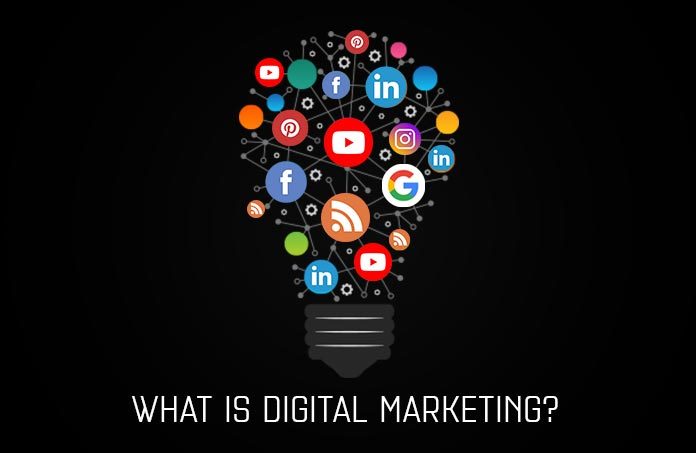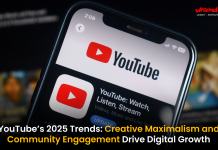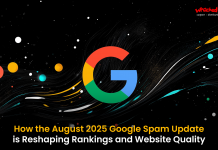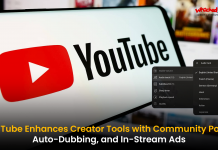In the last three decades, marketing as a field has evolved drastically. While products were promoted through primarily offline mediums, the evolution of the internet resulted in a shift from offline to online promotions. Defined as the process of promoting your brand and content on online platforms, digital marketing has today become one of the most important forms of advertising. At a time when there are more than a 100 million people using the internet on a daily basis, it is only befitting to take a quick look into when digital marketing really came into being.
The Beginning
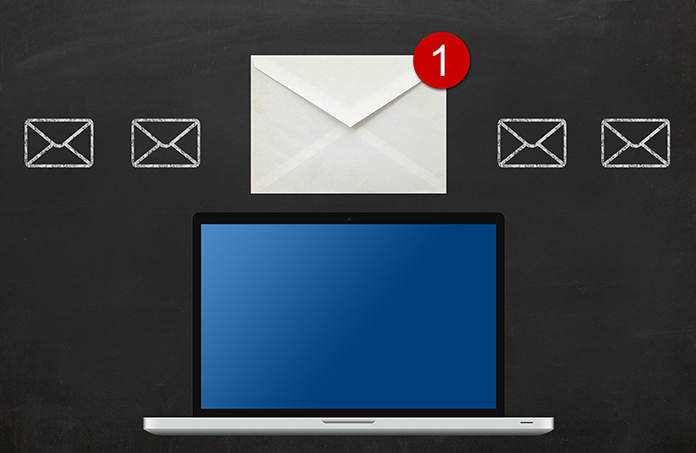
While the first advertisement on television may have popped up in the year 1949, the following years saw the evolution of technology in a brand new light. The ’50s were all about television advertisements and how people perceived products with a certain character. From washing machines, to cigarettes, all the major brands were given a face, thereby increasing the connection between the brands and the viewers. All these multiple brands had one goal: to promote their products in a way that reached the most number of people.
However, through the next few years, there was a shift in the marketing techniques being employed. The early days of digital marketing as a term can be traced back to the 1980s. This was a wonderful time in history. Innovations were being made and computers were getting more personalized everyday. IBM was at its peak and in 1981, when it came out with the first ever affordable and personalized computer, technology took a huge leap!
The ’80s also saw a shift in the way people were buying products, which made it a difficult task for people to attract new customers. Now, brands and businesses had to look at attracting customers without promoting their products directly. Interestingly, this was also the time when ACT introduced the term Big Data for the first time in the history of technology. According to marketing lore, the introduction of Big Data was the first steps towards a brand new marketing era. With more brands and more competition, there was an increasing need to change the marketing strategy – brands now focused on raising awareness and creating a better experience for the consumers. As the world of marketing kept advancing and growing, the focus of the marketing strategy changed from being product oriented to being consumer oriented.
The Adoption Of Internet Into Daily Life

The adoption of the internet into everyday life was a game changer. From the launch of Yahoo in 1994, to Google launching its first ever search engine and e commerce platforms like Amazon and eBay making their presence felt, the world of marketing was taking a new shape. Now, there were two forms of marketing: outbound and inbound. When Yahoo launched email, it joined the outbound marketing group. Post the dot com bubble, the internet world changed and startups which were majorly suffering, were taken over by the ones which could keep up with the changing times.
Post the dot com burst, the launch of Web 2.0 resulted in the cataloguing of websites, data and evolution of terms like Search Engine Optimization. Now, not only was it possible to keep a tab on the different websites, it was also possible for people to share and click on the links they liked. The launch of the rebranded version of the World Wide Web helped turn the internet into clickable ad formats.
With the launch of social media sites (MySpace was the first ever online platform,) there was now a greater focus on the inbound form of marketing. People began searching for products on the internet and were more aware of the world. To make things interesting for the brands, Big Data was making it easier to analyze and understand human behaviour in a way that was reshaping brand – consumer relationships completely. This resulted in the development of marketing automation, a move which started bridging the gap between the consumer and provider and which furthered the growth of digital marketing to brand new heights.
The Growth Of Digital Marketing

This shift in marketing towards inbound strategies helped in placing the focus on the consumers’ preference, which was seen through how products were promoted. Moving from the character based products and advertisements which were being made in the early 1900s, brands now started marketing with a new strategy. Consumers today expect a lot more from marketing than was earlier thought needed. Take, for example Walt Disney. When Disney was prepping for the release of PAN, their entire strategy was based on consumer behaviour derived from Big Data. However, after all the data collected and all the information derived based on consumer behaviour and analytics, Disney realised it needed to change its strategy and focus on personalising content made available to specific channels. The result? A 26% increase in ROI and a marketing strategy which propelled Disney to the top!
Interestingly, this was also the time when smartphones were growing and more regularly used by people all over the world. While the beginning parts of 2000 saw the growth and acceptance of the internet into everyday life, the later half of the 2000s saw the overwhelming acceptance of social media. Through the years, clickable ads changed the way marketing worked and with banner ads being bought over everyday, Google’s and Amazon’s popularity was increasing!
The Creation Of The Cookie
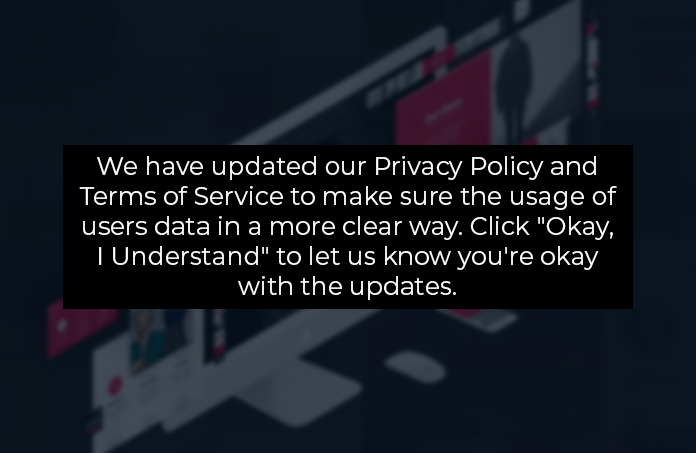
With people becoming more and more dependent on technology, marketing agencies realised the best way to attract more customers was by creating personalized content. The first time the “Cookie” was created, it was to understand and analyze how people looked for content by looking at their browsing habits. From Google to Amazon, every major website started using Cookies on the platform and slowly, there was a clear understanding of consumer behaviour. While the creation may seem like a minor addition to an already booming industry, the impact it had was quite a large one.
With so many things changing and growing, the appearance of Web 2.0 was a welcome change in the world of marketing. People were no longer just looking at information, but wanted to actively embrace changes and the way information was promoted. After a lot of to and fro and failed attempts, Web 2.0 finally became a social world!
Marketing Through Social Media And Cell Phones

While the initial days of the cell phone were for making calls during travel, the later years saw cell phones evolve into a lifeline. Everything was now accessible at your fingertips and with social media platforms being at an all time peak, the collaboration between the social media and mobile marketing was considered an inevitable move.
Digital marketing was growing so much, people started moving away from traditional forms of marketing. The world of marketing was now about transparency and facts. While earlier sold to dismiss cleverly induced myths, brands had to work to be transparent and give consumers exactly what was promised. From being a 30 % user friendly area, to being an industry which was highly dependent on the consumer, the marketing game was changing everyday.
With the world being more social friendly today, sharing has become a key aspect of digital marketing. Through transparency and loyalty, brands now started producing content which didn’t push the products, but enticed the viewer into wanting the product being marketed. While Big Data was used to create content through data analysis,the more personalized content started becoming, the easier it was to get feedback and make user based content. Not only did this kind of marketing increase the amount of content available to the brands, it also helped in improving the relationship between the buyers and producers. Brands like GoPro and Polaroid were increasingly becoming popular because they had a strong focus on not the product they were selling, but what the consumer wanted and expected from the product, a process which helped them create better ads! The popularity of personalized marketing led to the development of agile marketing (through which the world saw the growth of Oreo and Tide,) a field which quite literally took the combination of user integrated marketing and preferences to create a brand new user experience. Through the years, digital marketing grew to encompass not just one, but five different types!
The Different Types Of Digital Marketing

Over time, people have realised the importance of promoting products on social media. With social media evolving from just being a promotional platform, there is more than one place where content can be marketed. In order to understand what suits your company in the best way possible, these are the different types of digital marketing platforms you can use:
- Search engine marketing and PPC:
SEM or search engine marketing is one of the primary ways to use digital marketing to your advantage. By using ads on platforms like Bing, Yahoo and Google Ads, SEM helps in optimizing the value of your brand to the fullest through using payments to increase the kind of engagement your brand gets.
- Search Engine Optimization (SEO):
SEO helps increase your site’s ranks and makes sure that you as a website, are always seen first on search engines. By increasing the visibility, reach and Alexa ranks, your website can have higher positions on the search engine results page (SERP.) Further, by increasing awareness, activity and the kind of work being done, SEO basically acts like your website’s guide to a higher search result!
- Social Media Marketing (SMM):
Social media marketing (SMM) is the most popular form of digital marketing. Also one of the oldest types, this method is also perhaps one of the most common methods being used by businesses all over the world. Other than platforms like Facebook, Twitter and LinkedIn, the presence of niche discussion platforms like Quora and YouTube also helps in increasing the message you want to give out as a brand.
- Email Marketing:
While not as popularly used today as a means of marketing as compared to the previous ones, email marketing is still quite a major player when it comes to digital marketing. Used primarily to send information and give regular updates, email marketing not only ensures a quicker conversion rate, but also helps in building relationships with existing clients.
Digital Marketing – The future

Today, it has become increasingly difficult to keep up with the constantly changing trends and digital marketing has now evolved to become an in depth analysis of individual platforms. Realising that there are more than one platforms available today for promoting content in a unique manner, WOM has become the best in the field by understanding the different fields of digital marketing.Today, WOM is a bearer of change because we believe the best results can only be delivered when change is accepted as an integral part of organisations.
Brands are slowly but surely realising the importance of moving towards getting professional help from people who are ready to make a difference with content. Over the years, people who gained knowledge in the field of marketing created a brand new industry called advertising.
The internet is changing and growing everyday. There are new forms of marketing and advertising popping up every minute. While the past may have been about the Marlboro Man, the future is about you as a user. Understanding the need to shift focus from the brand and to what people really want as a consumer, Whacked Out Media has continuously used digital marketing to further not just its growth, but that of our clients as well. Today, WOM is at the top of its game because as a company, we are enthusiastic, driven and forerunners of innovation.

